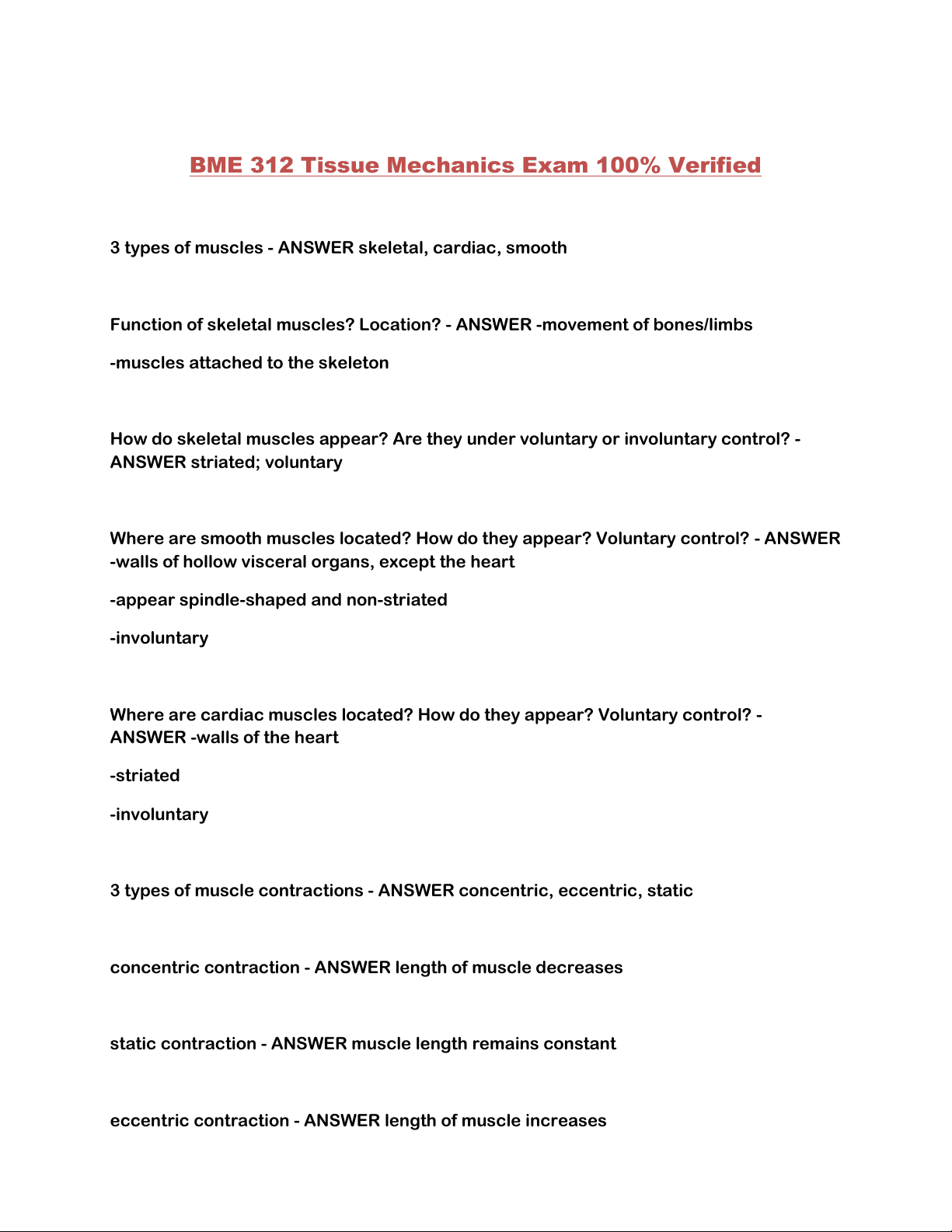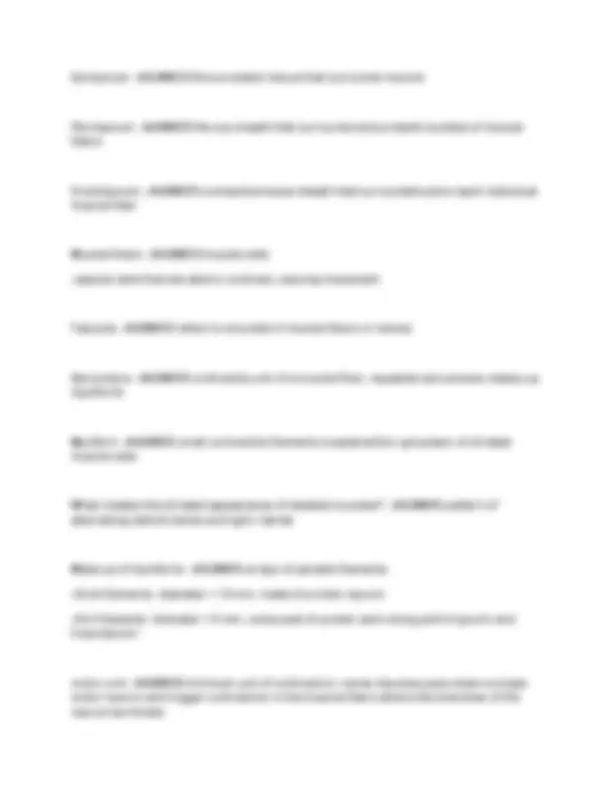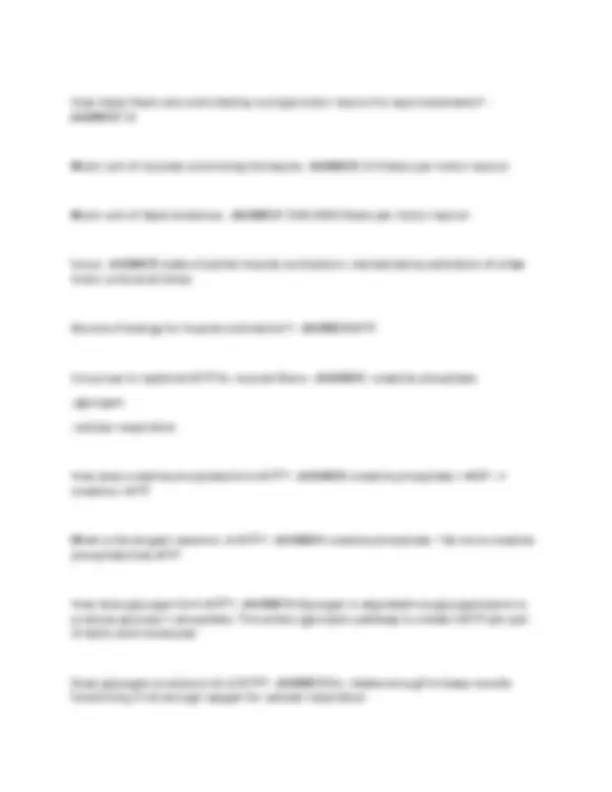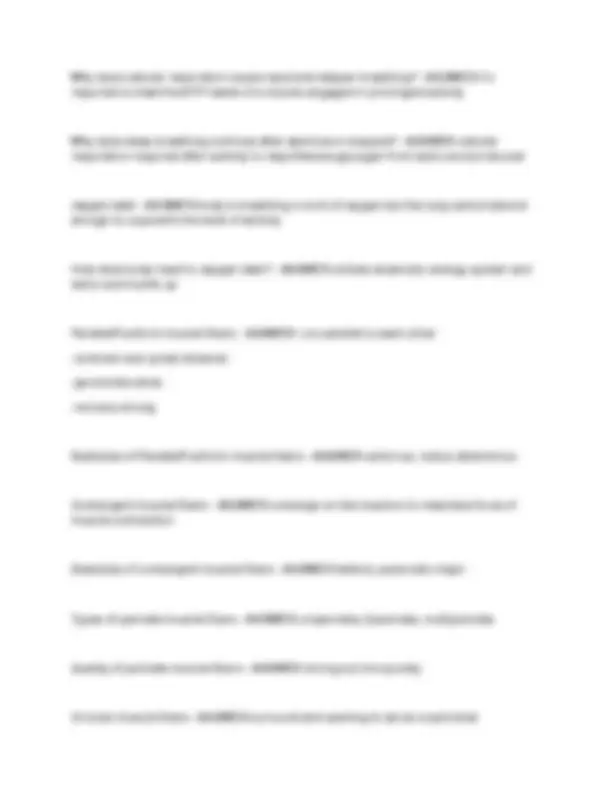





Study with the several resources on Docsity

Earn points by helping other students or get them with a premium plan


Prepare for your exams
Study with the several resources on Docsity

Earn points to download
Earn points by helping other students or get them with a premium plan
Community
Ask the community for help and clear up your study doubts
Discover the best universities in your country according to Docsity users
Free resources
Download our free guides on studying techniques, anxiety management strategies, and thesis advice from Docsity tutors
A comprehensive overview of muscle types, functions, and contractions. It covers the three types of muscles (skeletal, cardiac, and smooth), their characteristics, and their roles in movement. The document also explains the different types of muscle contractions (concentric, eccentric, and static), the mechanics of skeletal muscle contractions, and the energy sources for muscle contraction. Additionally, it discusses the structure of muscle fibers, the organization of muscle tissue, and the concept of motor units. A valuable resource for students studying biomechanics, physiology, or related fields.
Typology: Exams
1 / 6

This page cannot be seen from the preview
Don't miss anything!




3 types of muscles - ANSWER skeletal, cardiac, smooth Function of skeletal muscles? Location? - ANSWER -movement of bones/limbs-muscles attached to the skeleton
How do skeletal muscles appear? Are they under voluntary or involuntary control? -ANSWER striated; voluntary
Where are smooth muscles located? How do they appear? Voluntary control? - ANSWER-walls of hollow visceral organs, except the heart -appear spindle-shaped and non-striated-involuntary
Where are cardiac muscles located? How do they appear? Voluntary control? -ANSWER -walls of the heart -striated -involuntary 3 types of muscle contractions - ANSWER concentric, eccentric, static concentric contraction - ANSWER length of muscle decreases static contraction - ANSWER muscle length remains constant eccentric contraction - ANSWER length of muscle increases
what does an agonist muscle do? - ANSWER -causes movement through concentriccontraction -shortens muscle length to cause joint movement what does an antagonist muscle do? - ANSWER -causes movement through eccentriccontraction -lengthens muscle length to decelerate motion of joint Explain mechanics/forces of skeletal muscle contractions - ANSWER -duringcontraction, muscle is always in tension -a muscle can only exert a pull, not a push Tendon definition? What are they made of? - ANSWER -attaches muscle to bone-formed from many parallel bundles of collagen fibers
Tendon sheath - ANSWER double layered sacs containing synovial fluid that surroundtendons and are lined with synovial membrane
Function of tendons - ANSWER -minimize friction at joint -facilitate movement of joint Fascia - ANSWER forms of sheets or bands of fibrous connective tissues that covermuscles or organs
Superficial fascia - ANSWER consists of areola connective tissue and adipose tissue Deep fascia - ANSWER holds muscles together
How many fibers are controlled by a single motor neuron for eye movements? -ANSWER 10
Motor unit of muscles controlling the larynx - ANSWER 2-3 fibers per motor neuron Motor unit of Gastrocnemius - ANSWER 1000-2000 fibers per motor neuron tonus - ANSWER state of partial muscle contraction; maintained by activation of a fewmotor units at all times
Source of energy for muscle contraction? - ANSWER ATP 3 sources to replenish ATP for muscle fibers - ANSWER -creatine phosphate-glycogen -cellular respiration How does creatine phosphate form ATP? - ANSWER creatine phosphate + ADP -->creatine + ATP
What is the largest reservoir of ATP? - ANSWER creatine phosphate: 10x more creatinephosphate than ATP
How does glycogen form ATP? - ANSWER Glycogen is degraded via glycogenolysis toproduce glucose-1-phosphate. This enters glycolytic pathway to create 2 ATP per pair of lactic acid molecules Does glycogen produce a lot of ATP? - ANSWER No: makes enough to keep musclefunctioning if not enough oxygen for cellular respiration
Why does cellular respiration cause rapid and deeper breathing? - ANSWER it'srequired to meet the ATP needs of a muscle engaged in prolonged activity
Why does deep breathing continue after exercise is stopped? - ANSWER cellularrespiration required after activity to resynthesize glycogen from lactic acid produced
oxygen debt - ANSWER body is breathing in a lot of oxygen but the lung cannot absorbenough to cope with the level of activity
How does body react to oxygen debt? - ANSWER utilizes anaerobic energy system andlactic acid builds up
Parallel/Fusiform muscle fibers - ANSWER -run parallel to each other -contract over great distance-good endurance -not very strong Examples of Parallel/Fusiform muscle fibers - ANSWER sartorius, rectus abdominus Convergent muscle fibers - ANSWER converge on the insertion to maximize force ofmuscle contraction
Examples of convergent muscle fibers - ANSWER deltoid, pectoralis major Types of pennate muscle fibers - ANSWER unipennate, bipennate, multipennate Quality of pennate muscle fibers - ANSWER strong but tire quickly Circular muscle fibers - ANSWER surround and opening to act as a sphincter